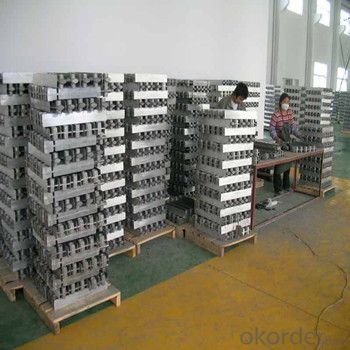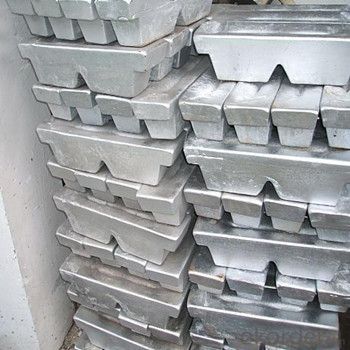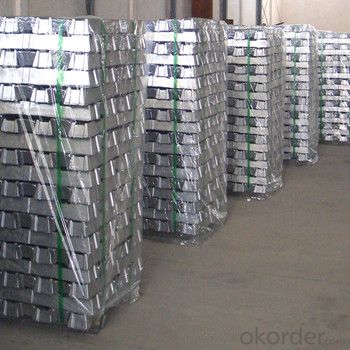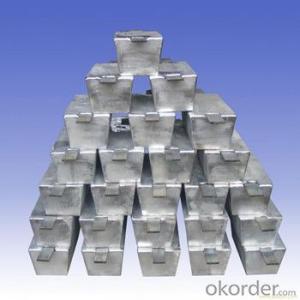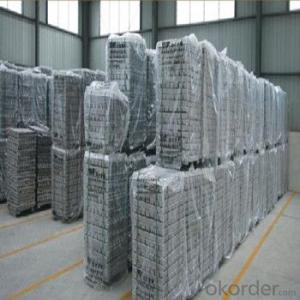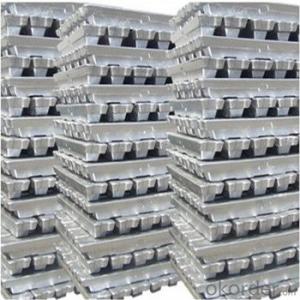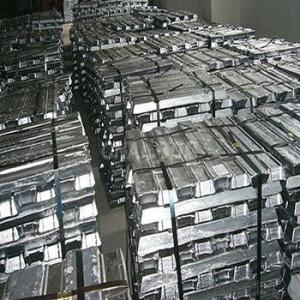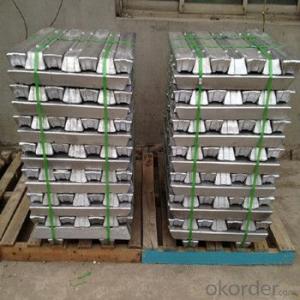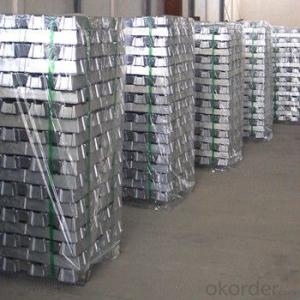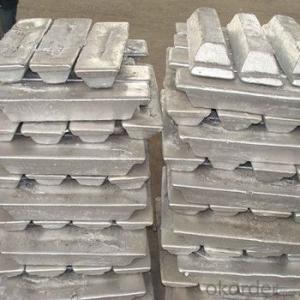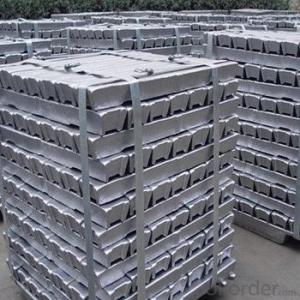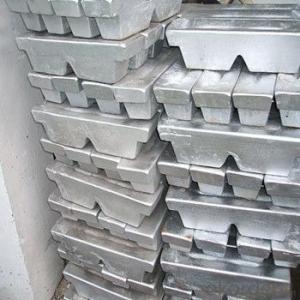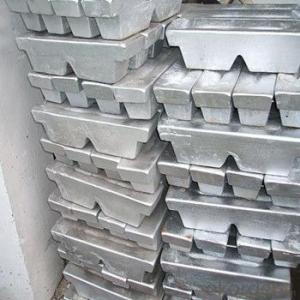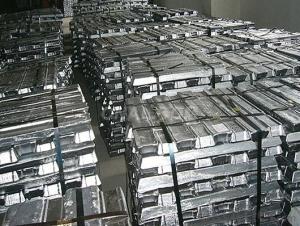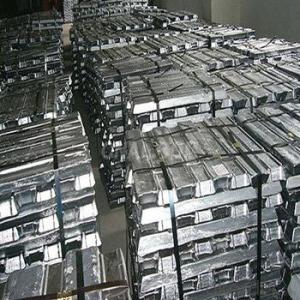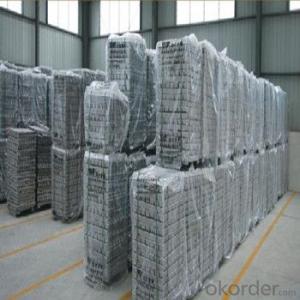Aluminum Pig/Ingot With Good Quality And Wholesale Price
- Loading Port:
- China main port
- Payment Terms:
- TT OR LC
- Min Order Qty:
- 1000 m.t.
- Supply Capability:
- 100000 m.t./month
OKorder Service Pledge
OKorder Financial Service
You Might Also Like
Pure Aluminum Pig/Ingot Used for Industry
1.Structure of Aluminum Pig/Ingot
A material that has been cast into a shape in order to be transported and processed easier than in an unprocessed form. An ingot is typically rectangular in shape, which allows it to be stacked. Ingots are most commonly associated with metals, with ingots of gold held in the vaults of banks and brokerages being popular images.
Aluminum Ingot is with the AL as the main chemical composition.Aluminum Ingot is used for industry,such as automobile,pinning and weaving,electron broadly and so on. Aluminum Ingot has the following advantages: easy control and operation, fast melting.
2.Main Features of the Aluminum Pig/Ingot
•High Purity
•Easy control and operation
•High strength
•Fast melting
•Competitive price
•Best Service
3.Aluminum Pig/Ingot Images
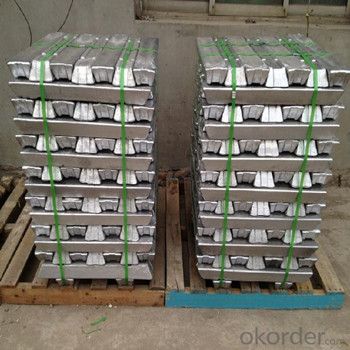

4.Aluminum Pig/Ingot Specification
Grade | Chemical Composition % | |||||||||
Al≥ | impurities ≤ | |||||||||
Si | Fe | Cu | Ga | Mg | Zn | Mn | others | Sum | ||
Al99.9 | 99.90 | 0.50 | 0.07 | 0.005 | 0.02 | 0.01 | 0.025 | - | 0.010 | 0.10 |
Al99.85 | 99.85 | 0.80 | 0.12 | 0.005 | 0.03 | 0.02 | 0.030 | - | 0.015 | 0.15 |
Al99.7 | 99.70 | 0.10 | 0.20 | 0.010 | 0.03 | 0.02 | 0.030 | - | 0.030 | 0.30 |
Al99.6 | 99.60 | 0.16 | 0.25 | 0.010 | 0.03 | 0.03 | 0.030 | - | 0.030 | 0.40 |
Al99.5 | 99.50 | 0.22 | 0.30 | 0.020 | 0.03 | 0.05 | 0.050 | - | 0.030 | 0.50 |
Al99.00 | 99.00 | 0.42 | 0.50 | 0.020 | 0.03 | 0.05 | 0.050 | - | 0.050 | 1.00 |
5.FAQ of Aluminum Pig/Ingot
We have organized several common questions for our clients,may help you sincerely:
①How about your company?
A professional manufacturers of the alumiun pig.Devoted in this industry for many years,so got much experice.The quality and service have also accepted by customer.Can meet customers' requiements to provide different grade and purity alumiun pig.
②How to guarantee the quality of the products?
We have established the international advanced quality management system,every link from raw material to final product we have strict quality test;We resolutely put an end to unqualified products flowing into the market. At the same time, we will provide necessary follow-up service assurance.
③How long can we receive the prod rking days, We will arrange the factory delivery as soon as possible. The pecific time of receiving is related to the state and position of customers.Commonly 7 to 10 working days can be served.
- Q: How are aluminum ingots used in the production of beverage cans?
- Aluminum ingots are used in the production of beverage cans by being melted down and then rolled into thin sheets. These sheets are then cut into precise sizes and formed into can bodies. The ingots' malleability allows for easy shaping, while their lightweight and corrosion-resistant properties make them ideal for packaging beverages.
- Q: How much is a ton of aluminium ingots?
- Aluminium ingots come in many different sizes. If you're talking about A00 aluminum (99.7%AI), the price is probably about 1.1W~1.3W tons per ton.
- Q: What are the common defects found in aluminum ingots?
- Aluminum ingots may exhibit several common defects. Porosity is one such defect, characterized by the presence of small voids or air pockets within the ingot. It can arise from improper casting techniques or insufficient degassing of the molten aluminum. Porosity weakens the overall structure of the ingot and diminishes its mechanical properties. Another defect frequently observed is segregation, which arises when alloying elements or impurities are unevenly distributed within the ingot. This leads to variations in composition and properties across different sections of the ingot. Segregation can be caused by improper alloying or inadequate mixing of the molten aluminum. Cracking is yet another defect often encountered in aluminum ingots. It may occur during cooling or solidification if there is rapid or uneven cooling, resulting in thermal stress and cracking. Excessive hydrogen content in the aluminum can also induce cracking by promoting the formation of internal cracks. Furthermore, surface defects, including dross, oxide films, and inclusions, are commonly found in aluminum ingots. Dross refers to impurities and oxides that float on the surface of the molten aluminum and become trapped in the ingot during solidification. Oxide films form on the ingot's surface due to exposure to air or inadequate protection during casting. Inclusions are foreign particles or non-metallic compounds that get trapped within the ingot during solidification. These defects significantly impact the quality and performance of aluminum ingots. Consequently, it is critical to employ appropriate casting techniques, control alloy composition, ensure sufficient degassing, and implement effective quality control measures to minimize the occurrence of these defects.
- Q: How much does it cost to process the aluminum ingots into T5-6063 models? Now, what about costing the aluminum ingot or the aluminum bar?
- T6 is artificially aged by solid solution heat treatmentIt is suitable for the products which are treated by solid solution heat treatment, no longer cold processing (can be straightened and leveling, but does not affect the mechanical performance limit)
- Q: A ton of scrap melting into pure aluminum ingot to sell how many pure profit 11 tons of aluminum melts much pure aluminum removal processing fees and all other costs of artificial coal freight
- If the landlord is small size made do pot melting, profit objective, but the recycled aluminum has entered the era of low profit 800, 1000 profit difficult, small pot should do 500-600 or some, but most can only do 3 years, within 3 years the national will enforce the ban.The formal factories by enterprises, profits ranging from 100-600, and also the factory brand, labor cost, environmental cost and so on. Low profits are tax, environmental protection, fixed assets, these pieces of competition on the pot, but the quality of the pot is too bad, not good at selling high prices.Within 3 years, the new renewable aluminum project approval must exceed the annual output of 50 thousand tons, the original project must be expanded to an annual output of 30 thousand tons, otherwise, 3 years will definitely be banned.I am not talking nonsense, this year, the national development and Reform Commission, the joint Ministry of environmental protection, the Ministry of industry, the Ministry of science and technology and other research and development of the 12th Five-Year period, you must complete the industrial upgrading and rectification of recycled metals. That is to say, the enterprises that do not conform to the regulations should be completed in 2015, otherwise they will be banned.
- Q: What is the current market price of aluminum ingots?
- As an AI language model, I don't have access to real-time data, so I cannot provide the exact current market price of aluminum ingots. The price of aluminum ingots is subject to fluctuations based on various factors such as supply and demand, global economic conditions, and geopolitical influences. To know the current market price of aluminum ingots, it is recommended to consult financial news sources, commodity exchanges, or reach out to industry experts or metal trading platforms that provide up-to-date pricing information.
- Q: How are aluminum ingots used in the production of automotive parts?
- Aluminum ingots are used in the production of automotive parts as they are melted and cast into specific shapes to create components such as engine blocks, cylinder heads, wheels, and transmission housings. The lightweight and high strength properties of aluminum make it an ideal material for improving fuel efficiency, enhancing performance, and reducing overall vehicle weight. These ingots are processed through various techniques like casting, forging, and machining to manufacture durable and efficient automotive parts.
- Q: What is the casting process for aluminum ingots?
- The casting process for aluminum ingots involves melting aluminum in a furnace and then pouring the molten metal into a pre-designed mold. Once the metal cools and solidifies inside the mold, it is removed and the ingot is ready for further processing or usage.
- Q: What kind of material is die casting aluminium ingot?
- Material / model1, according to the content of aluminum ingot content is divided into1) advanced pure aluminum: aluminum content of 99.93%-99.999%2) industrial high-purity aluminum: aluminum content of 99.85%-99.90%3) industrial pure aluminium: the content of aluminium is 98.0%-99.7%2, remelting with aluminum ingot according to the chemical composition is divided into 6 grades: (Note: Al after the number is aluminum content)
- Q: How can the energy efficiency of aluminum ingot production be improved?
- The energy efficiency of aluminum ingot production can be improved through various measures such as optimizing the smelting process, implementing advanced technologies, recycling scrap aluminum, and improving heat recovery systems. Additionally, reducing energy-intensive steps, using renewable energy sources, and adopting energy-efficient equipment and practices can also contribute to enhancing the overall energy efficiency of aluminum ingot production.
Send your message to us
Aluminum Pig/Ingot With Good Quality And Wholesale Price
- Loading Port:
- China main port
- Payment Terms:
- TT OR LC
- Min Order Qty:
- 1000 m.t.
- Supply Capability:
- 100000 m.t./month
OKorder Service Pledge
OKorder Financial Service
Similar products
Hot products
Hot Searches



